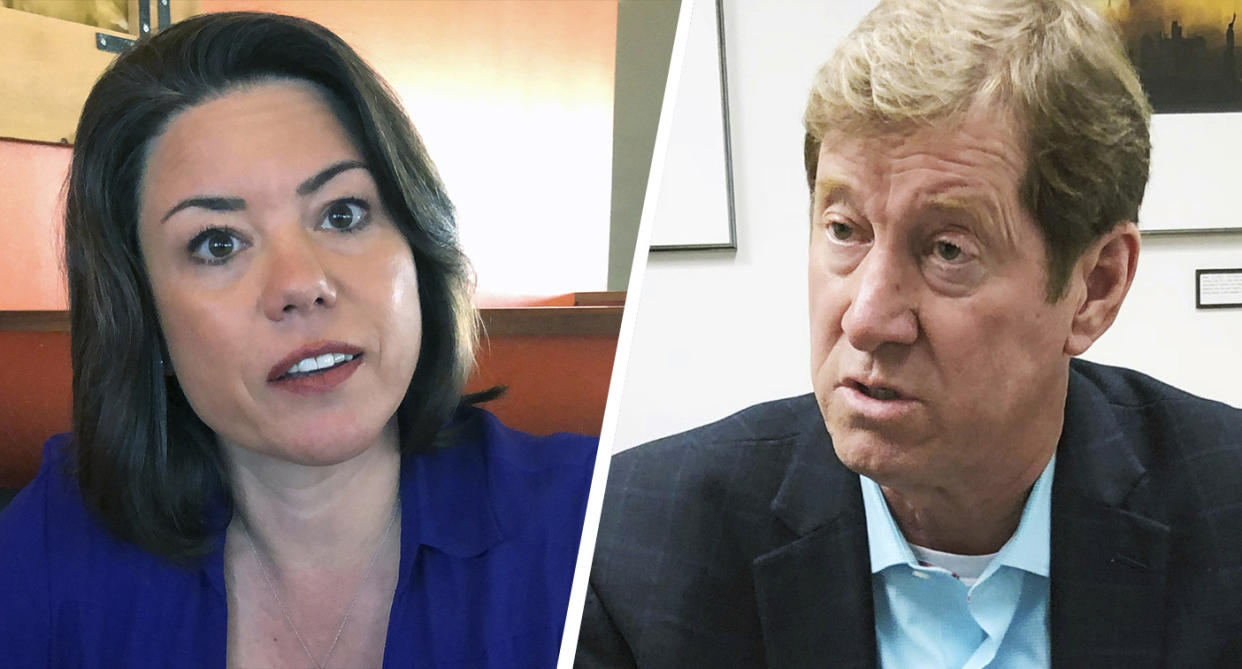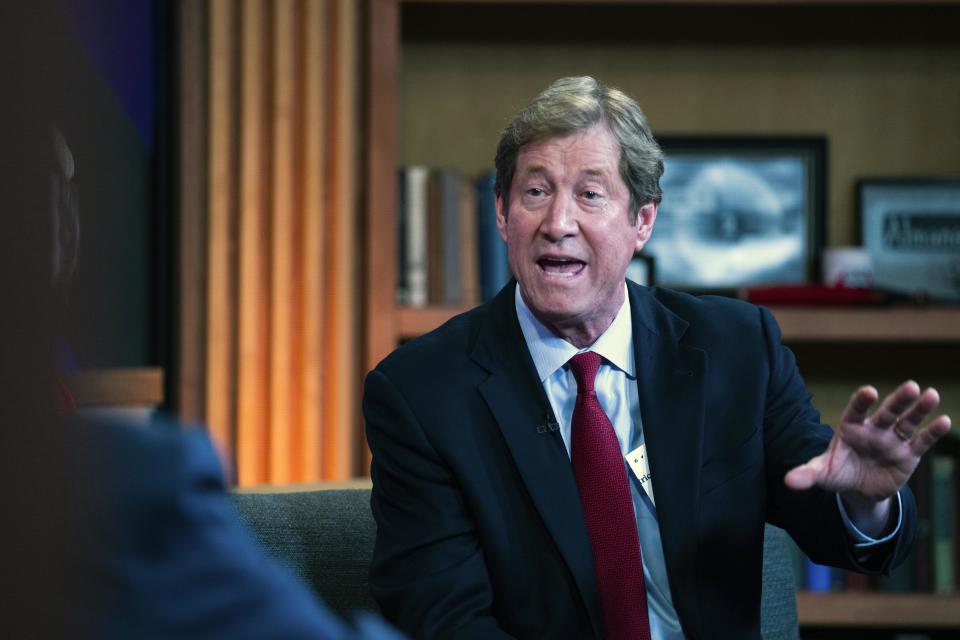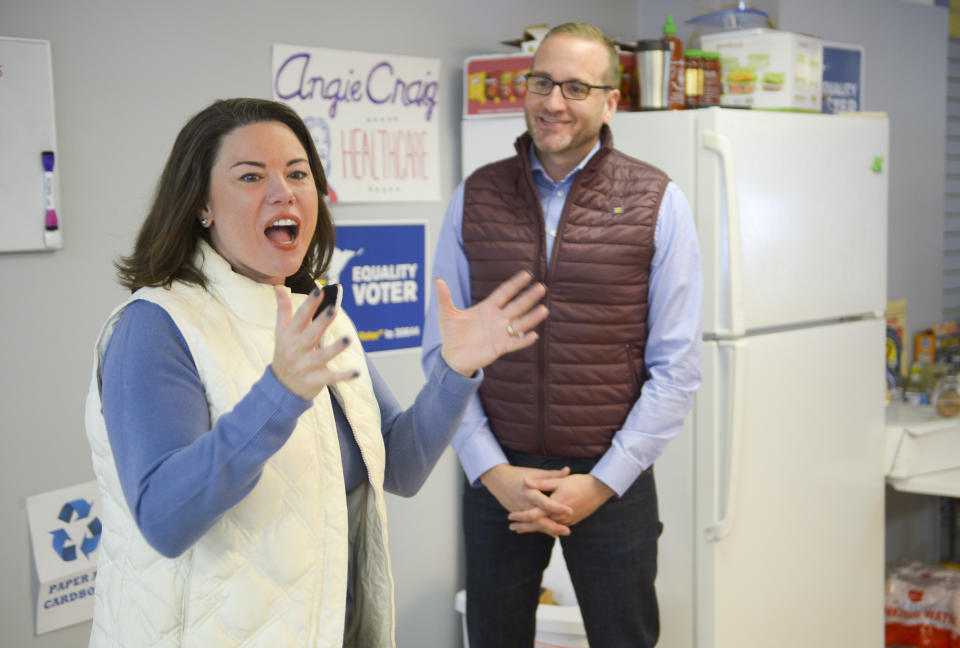A House rematch in a suburban Republican district sheds light on how landscape changed from 2016

Minnesota’s Second District had one of the most interesting congressional races of the 2016 cycle. The retirement of a Republican incumbent in a district encompassing suburban and rural areas around St. Paul resulted in a clash between Democrat Angie Craig, a medical device executive, and Republican Jason Lewis, a conservative talk radio host known for making incendiary comments. Craig out-fundraised Lewis by $3 million, ran what observers in the area considered a sturdy, clean campaign and earned the endorsement of President Barack Obama.
But Lewis won by two points — or 6,000 votes — in a race where a liberal third-party candidate garnered nearly eight percent. He’s running for reelection and will be on the ballot again, but so will Craig, who survived a challenge from her left in the Democratic nomination process. The Second District is just one of 435, but the rematch from 2016 may offer clues about how the political landscape has shifted in a district that was almost evenly split between Donald Trump and Hillary Clinton. (Trump won it by a point.)
As part of her post-loss reassessment, Craig told Yahoo News, she focused on talking to constituents. What she found were people who were struggling with the rising costs of health care and child care, and for whom the Democratic messaging of “America is already great” didn’t quite match reality.
“I spent the summer of 2017 actively attempting to find people who voted for Donald Trump,” said Craig. “What I did was I went to labor picnics and I just talked to families. The truth is Democrats were running in 2016 based on all the improvement in the economy — look at the unemployment rate, look how everything’s going — and we missed something really important: People were frustrated with Washington because even though unemployment was down, their paychecks weren’t getting any bigger. I spent a whole lot of time really trying to understand where that frustration was coming from, and that has helped inform my campaign in 2018.” On issues such as health care, she is running a center-left Democrat — supporting the Affordable Care Act but stopping short of endorsing Medicare for all.

Lewis drew criticism in the district for declining to hold in-person town halls as Republicans in Washington worked on a plan to overturn the Affordable Care Act. (He eventually held ticketed events.) Craig said she decided to run again after attending one of the town halls held with Lewis in absentia and hearing stories from Minnesotans who were dealing with issues with their health care or suffering from preexisting conditions. On her platform, she has pledged to hold monthly town hall-style events with constituents.
Lewis’s campaign is different from those of his GOP peers as he’s promoting his vote for the Republican tax cut that so many of his caucus mates are attempting to underplay in the run-up to Tuesday. The plan has been deeply unpopular, but Lewis has credited it for the country’s economic success, painting Craig as a far-left radical whose votes would undo the work of the Trump administration. Lewis also invited House Speaker Paul Ryan, who’s stepping down from Congress at the end of this term and whose popularity is low in nationwide polling, to campaign with him last month. While Lewis has voted with Trump more than 90 percent of the time — including supporting a repeal of Obamacare and the tax plan — he’s also worked with Democrats on criminal justice reform.
While conventional wisdom points to incumbents usually having an advantage, Lewis’s time in Congress may end up hurting him. In 2016, the campaign against him focused on controversial statements he made during his time as a radio host — CNN published new material earlier this fall — but they failed to stick, echoing how the Clinton campaign’s focus on the personal with Trump also faltered. Now Craig’s campaign can point to his votes to repeal Obamacare (which increased in popularity during attempts to repeal it) and in favor of the Republican tax cut (underwater in most polling).

Craig has also focused more on campaign finance reform, a message that conveniently lines up against Lewis, who was named by End Citizen’s United in their top 20 list of candidates who took money from special interest groups. She said she is seeing increasing enthusiasm from volunteers: a third of those in her meetings say they are participating in a campaign for the first time.
She goes into the race with an advantage in fundraising, and unlike in 2016, there is no third-party candidate. The nonpartisan Cook Political Report has the race rated as lean Democrat while the analytics site FiveThirtyEight marks it as likely Democrat, giving Craig a six in seven chance of winning. (The race was rated as a toss-up in 2016.) A New York Times poll conducted at beginning of October staked Craig to a 51-39 lead.
Lewis has attempted to follow Trump’s lead in using the group of Central American migrants traveling through Mexico toward the U.S. as a closing message scare tactic, publishing a video in which he asks Craig if she supports them entering the country illegally. (The refugees are seeking asylum and would not be entering the country illegally.) Lewis remains confident in the face of the polls.
“We’re in a better spot than we were in 2016,” Lewis told the Minnesota Star Tribune last month when asked about polls that show him trailing. “The Second District is always going to be tight. But I feel confident if we can get our people out, we’ll make it through.”
_____
Read more Yahoo News midterms coverage:
In deep-red Missouri, McCaskill pursues voters far off the Democratic beaten path
With racial tension high in Florida race, Trump calls Gillum a ‘thief’
Menendez race pits ethical concerns against party loyalty, and loyalty is winning
Portrait of a moderate district: NJ-11 leans R, but the race leans D
Virginia Republican congressman tries to weather scandal and wave of spending




